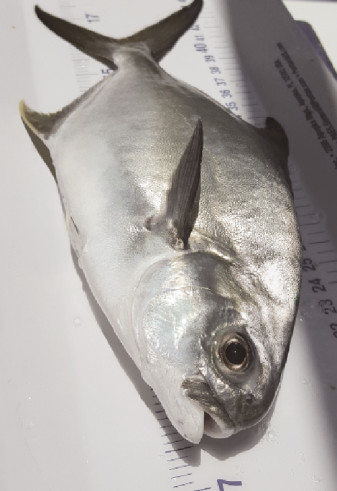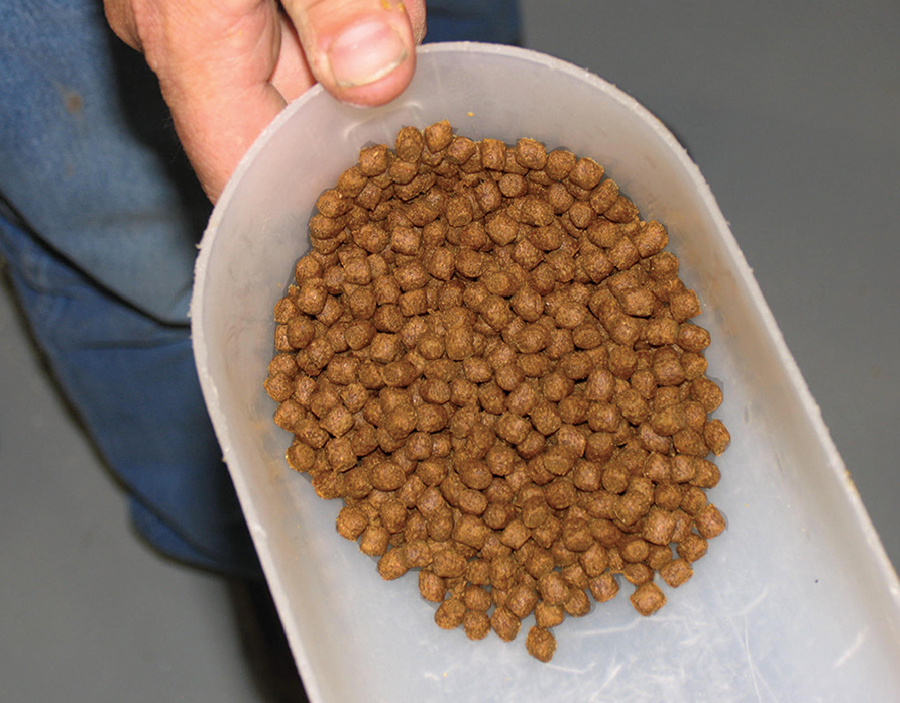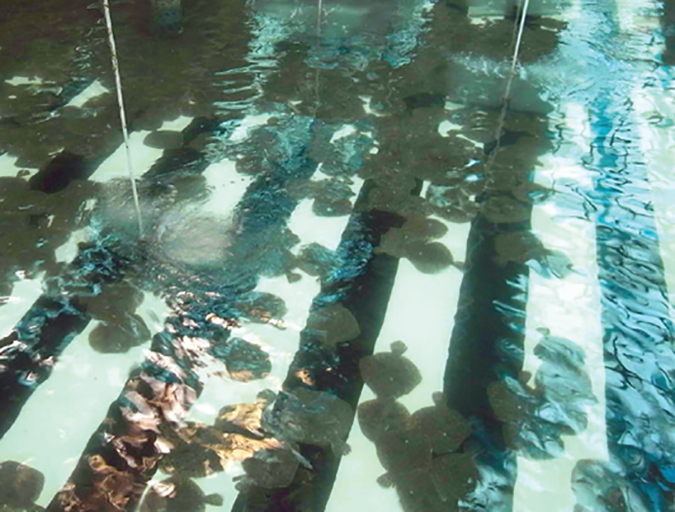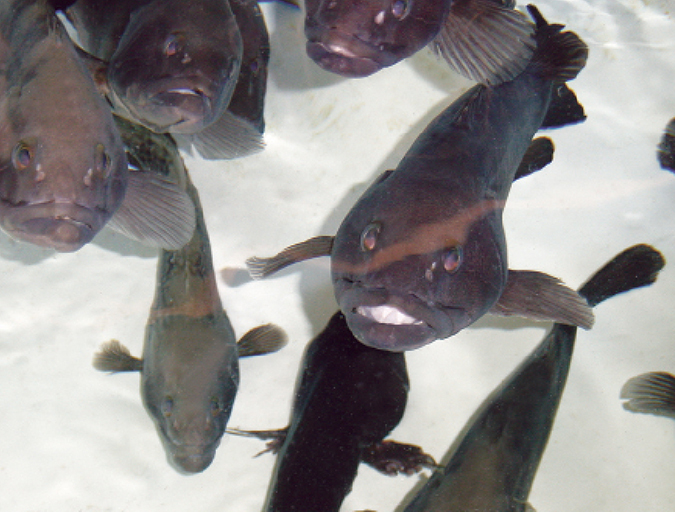Digestible protein-digestible energy ratios key to optimizing feeding efficiency

Feeds can represent more than 70 percent of the production costs in aquaculture. Since increased consumption of feed occurs in the final stages of the growout cycle, it is clear the development of ecologically efficient, economically viable and nutritionally adequate diets for adult marine fish should be a priority.
Yet we are still faced with insufficient information on the nutrition requirements of large sizes of commercially important tropical marine fish species and no clear information on the maximum levels of replacement of fishmeal and fish oil in diets for near-market-size fish. Feed manufacturers have made important progress towards formulating and developing better diets, but additional information is required to improve the sustainability and economic viability of the industry.
The aquaculture nutrition program at the University of Miami in Florida, USA, was established in 2010 to provide scientific and technological support in the area of nutrition to companies dedicated to the aquaculture of tropical marine fish. With the support of the United Soybean Board, Illinois Soybean Association, U.S. Soybean Export Council and Open Blue Sea Farms in Panama, the program has conducted research on nutritional requirements and traits of feed ingredients for cobia, pompano and, with Martec S.A. in Costa Rica, spotted rose snappers.
Fishmeal replacement for adult fish
A study on the effects of replacing dietary fishmeal with soy-based products on the production performance of cobia between 1.8 and 3.2 kg was conducted by Suarez et al. (2013. Aquaculture 416-417. 328-333). The soy-based products used were dehulled soybean meal, solvent-extracted soybean meal and a novel non-genetically modified variety of soybean meal.
Results indicated that up to 80 percent of the fishmeal could be replaced in larger cobia, attaining a fish in:fish out ratio of 1.3 without compromising growth performance or health (Table 1). The ability to replace such a high amount of fishmeal indicated the nutritional requirements of cobia may change with age and that developing more cost-effective and environmentally sustainable diets is possible without compromising health or growth rates.
This study helped validate the need for additional research on cobia and others species, not just at the juvenile stage, but at every stage of the commercial production chain.
| Dietary treatment | Final weight (kg) | Weight gain (%) | Specific growth rate (%/day) | Feed efficiency | Feed conversion ratio | Fish in:fish out |
|---|---|---|---|---|---|---|
| Days 1-29* | ||||||
| 1 | 2.38 | 35.5a | 1.02a | 0.56 | 1.80 | 2.08c |
| 2 | 2.58 | 24.4b | 0.74b | 0.51 | 1.95 | 1.17b |
| 3 | 2.50 | 35.6a | 1.02a | 0.57 | 1.81 | 1.10b |
| 4 | 2.38 | 33.1a | 0.97a | 0.57 | 1.74 | 0.91a |
| Pr>F (spell out) | 0.24 | 0.014 | 0.008 | 0.82 | 0.87 | 0.003 |
| Pooled standard error | 0.46 | 15.04 | 0.37 | 0.08 | 0.28 | 0.52 |
| Days 2-60** | ||||||
| 1 | 2.80 | 56.2 | 0.76a | 0.49 | 2.0 | 2.30c |
| 2 | 3.00 | 49.9 | 0.61b | 0.47 | 2.1 | 1.27b |
| 3 | 2.84 | 52.3 | 0.69a | 0.46 | 2.1 | 1.31b |
| 4 | 2.81 | 54.5 | 0.71a | 0.49 | 2.0 | 1.00a |
| Pr>F (spell out) | 0.43 | 0.1 | 0.04 | 0.60 | 0.69 | 0 |
| Pooled standard error | 0.60 | 17.8 | 0.21 | 0.03 | 0.13 | 0.54 |
| Days 1-90*** | ||||||
| 1 | 3.15 | 78.5 | 0.62 | 0.41 | 2.4 | 2.8b |
| 2 | 3.30 | 64.1 | 0.53 | 0.40 | 2.5 | 1.5a |
| 3 | 3.27 | 75.3 | 0.59 | 0.43 | 2.3 | 1.4a |
| 4 | 3.10 | 73.1 | 0.58 | 0.39 | 2.5 | 1.3a |
| Pr>F (spell out) | 0.60 | 0.24 | 0.25 | 0.30 | 0.31 | 0 |
| Pooled standard error | 0.75 | 28.9 | 0.18 | 0.02 | 0.13 | 0.63 |
Digestible protein-digestible energy ratios
In a study in review with adult Florida pompano by Matthew Taylor, the effects of dietary digestible protein:digestible energy (D.P.:D.E.) ratios on growth, feed efficiency, nitrogen utilization and body composition were investigated. A growth trial and subsequent digestibility trial were carried out utilizing five diets based on anchovy meal, soybean meal or corn gluten meal as protein sources. The feeds were formulated to have different D.P.:D.E. ratios ranging 21.7-26.3 mg protein/kJ.
Fish were fed to apparent satiation by hand once daily at 9 a.m. for 88 days. No significant difference between growth performance and liver weight was observed for all diet treatments, except for the diet with 21.7 mg protein/kJ D.P.:D.E., which had significantly lower mean weight gain, feed efficiency and feed conversion.
The digestible protein:digestible energy ratio has become a major factor in fish feed formulation. The Committee on the Nutrient Requirements of Fish and Shrimp of the U.S. National Research has proposed that D.P.:D.E. is a more rational and precise way of conveying crude protein requirements in fish feed. This ratio is important in aquaculture production because a correct ratio will lead to the most efficient conversion of dietary protein into body mass, which maximizes growth and minimizes feed consumption.
Methionine requirements of adult fish
Work by Jonathan Goff and Delbert Gatlin III found that methionine is one of the first limiting essential amino acids in many fish diets, especially those containing higher levels of plant protein sources such as soybean meal, peanut meal and copra meal. With substitution for fishmeal in diets, limiting components such as the sulfur amino acid methionine need to be supplemented.
Many investigators have reported the quantitative methionine requirements of commonly cultured fish species as ranging 18-40 g/kg. This year, J. Niu and co-authors reported the requirement for methionine in golden pompano, Trachinotus ovatus, as 10.6 g/kg diet. These results were valuable, but the study was performed on small fish with initial body weights of 12.5 g and final body weights of 72.0 g.
The authors’ study focused on determining the methionine requirements for large Florida pompano, Trachinotus carolinus, with initial weights of 208 g and final weights of 505 g. These larger fish naturally consumed higher amounts of food. The first results of the investigation suggested that Florida pompano adults perform well as far as growth and feed efficiency with values of methionine below those published by J. Niu.
Perspectives
A closer look at the nutritional requirements and digestive capacity of larger fish is necessary to optimize growth and minimize waste in commercial marine fish farms. These mammoth goals can be more rapidly attained under synergistic collaborations among all stakeholders in the production chain, from suppliers of raw materials and aquafeed manufacturers to commercial farmers and research institutions.
Authors
-
Jorge A. Suarez, Ph.D.
University of Miami
Rosenstiel School of Marine and Atmospheric Science
4600 Rickenbacker Causeway
Miami, Florida 33149 USA[117,100,101,46,105,109,97,105,109,46,115,97,109,115,114,64,122,101,114,97,117,115,106]
-
Carlos Tudela, Christina Belfranin, Steven Sutton, Matthew Taynor, Ronald Hoenig, Drew Davis, Thiago Raggi, Daniel D. Benetti, Ph.D.
University of Miami Rosenstiel School of Marine and Atmospheric Science
Tagged With
Related Posts

Aquafeeds
Insect meals: Novel protein, fat sources for farmed shrimp
Poor-quality ingredients can’t become good-quality ingredients. Quality protein is essential for the healthy growth of any omnivorous or carnivorous aquaculture species. Insect meals seem to fill this need, and their mass-scale production appears to be sustainable.

Aquafeeds
Turbot growth performance on soy-based feeds
Turbot are typically fed diets containing 45 to 65 percent fishmeal. In a study that gave turbot feed with 40 percent soy protein concentrate, the fish had decent growth and excellent survival.

Aquafeeds
Increased density improves grouper feeding response, growth
A growth trial using hatchery-reared grouper was carried out to study the effects of stocking density on feed intake and subsequent growth. Contrary to common perceptions, fish stocked at the highest density had higher feed intake and body weights.

Aquafeeds
A look at phospholipids in aquafeeds
Phospholipids are the major constituents of cell membranes and are vital to the normal function of every cell and organ. The inclusion of phospholipids in aquafeeds ensures increased growth, better survival and stress resistance, and prevention of skeletal deformities of larval and juvenile stages of fish and shellfish species.


